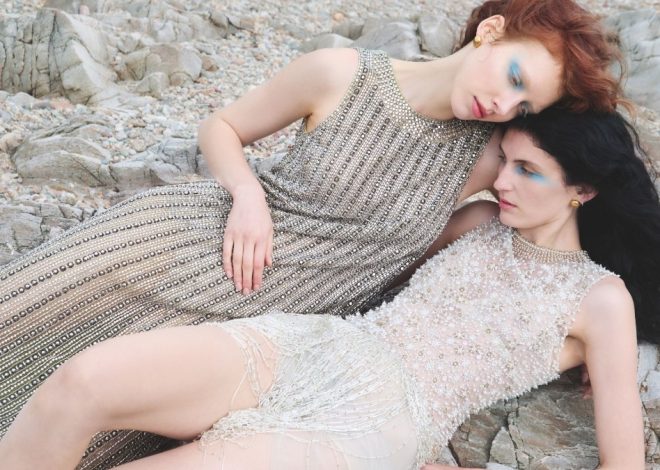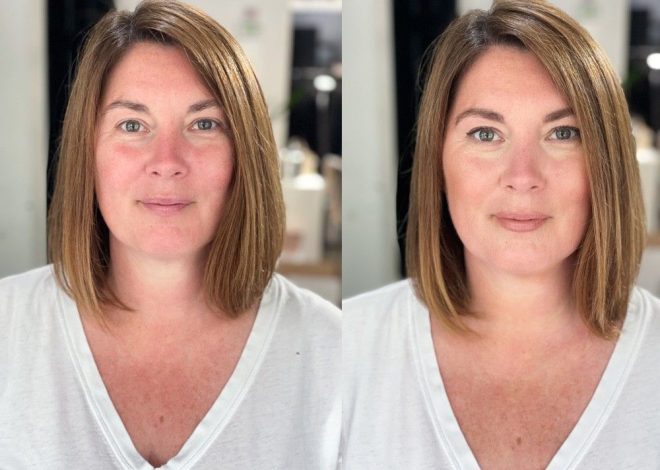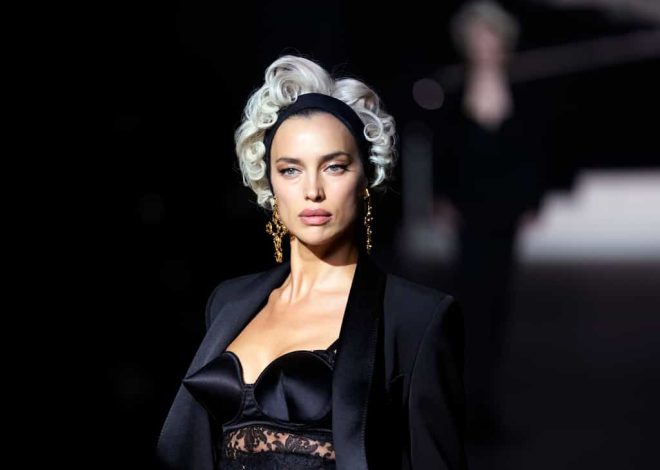Fashion Legend Michèle Lamy Defines Beauty on Her Own Terms, Dressed in the Latest Couture Pieces
Never one to follow someone else’s rules, fashion legend Michèle Lamy defines couture on her own terms.
Coat, Ashi Studio; rings, Lamy’s own. Photo: Tarek Mawad
Michèle Lamy has an almost mythical presence across the creative industries, her iconographic effect on par with that of Iris Apfel, Iman, or André Leon Talley. Names like these are shorthand for an inimitable vision, evoking a clear and singular image of the figures to which they belong. Lamy – a force in fashion that cannot be categorized – is immediately recognizable by the thick black line drawn onto her forehead daily, her fingers covered in rings and dye, her gilded teeth inspired by the metal bands discovered in the mouths of ancient Egyptian mummies. The French-born luminary of Algerian descent was a defense lawyer before becoming a life partner and muse to Rick Owens, with whom she co-founded their design empire, Owenscorp. As if these successes alone aren’t intimidating enough, her bewitching gaze is darkly outlined, its intensity piercing even over Zoom. But Lamy is warm and funny, sharing that she is at her daughter’s home in Fontainebleau after having been “dancing all night not so long ago.” She is curious in an intellectual and artistic way, as open to dissecting the couture looks from her recent Vogue Arabia shoot as she is to entertaining some of my more existential questions. One of which, she says to my utter surprise, leaves her speechless: Do broken people make better art?

Dress, Viktor & Rolf. Photo: Tarek Mawad
“You ask a very dangerous question here,” Lamy states, “because when you say broken people, what is somebody who is broken?” She thinks out loud about Julian Schnabel, who she heard started painting from bed while he was sick as a child, eventually gaining notoriety in adulthood for his cracked crockery pieces. (When I contact Schnabel about this, he tells me that as compelling as this anecdote might sound, it is in fact false: “I painted when I was sick in bed, when I was not sick, on the floor, under the dining room table, in the kitchen, in my uncle Jack’s cement garden in Far Rockaway in the summer. I painted wherever I was.”) Her thoughts wander to her collaborations with The Skateroom, a B Corporation that has funded the construction of skate parks in places such as Jordan, Pakistan, and Morocco as hubs for community and creativity. She sees the resilience of the at-risk youth who get involved in these projects – the girls in particular, despite the social and economic barriers threatening to shatter their dreams – as a kind of art. But ultimately, Lamy decides she simply doesn’t have a straight answer. Had she been asked this question a year ago, she says, maybe her response would be different. But since the devastating escalation of the war in Gaza last October, the outspoken advocate for the Palestinian people struggles to find the words to express what she’s feeling in this moment. “We are in a broken world,” she concludes.

Dress, Jean Paul Gaultier; rings, Lamy’s own. Photo: Tarek Mawad
As a designer and producer – she launched the multifaceted creative movement Lamyland in 2014 as an extension of Les Deux Cafes, her LA cabaret spot from the 90s – the multihyphenate relies on various art forms to send messages that can otherwise get lost in conversation. Hence why posing in this season’s boldest couture ensembles came naturally to her. Lamy believes that a photo, like an Etel Adnan poem, can transform not just our perspectives on what is being portrayed, but the subject itself. “You invent a story when you’re on a shoot: who you are and who you could be,” she explains, delving into the power of performance. “If we change ourselves, that helps to change the world.”

Dress, shoes, Schiaparelli. Photo: Tarek Mawad
On set, Lamy accepts the challenge of considering the notion of beauty through the lens of the precious garments that have been selected for her. It’s not quite the attire of a person who travels everywhere with her beloved boxing gloves and once carried a replica of her husband’s head as a purse. But she is fully herself even as she inhabits a series of characters, her ability to be immersed in an alternative narrative giving her both confidence and purpose. It helps, too, that she’s in the comfort of her own home. The Schiaparelli heels she steps into are nothing like the platform clogs she has favored since the late 60s, when she remembers being stopped on the street by a surgeon who was making a documentary about the health risks of her preferred footwear. Cocooned in a white textured coat by Saudi label Ashi Studio, Lamy decides she is in her own version of One Thousand and One Nights, her face swallowed by the fabric as though she is one of the beheaded women sometimes referenced in the famed collection of Middle Eastern folktales. In a piece by Charles de Vilmorin – the French designer who dressed more than 150 participants in colorful ensembles for the Olympics opening ceremony – she morphs into a fantastical wolf-like creature, her features still concealed. It is while wearing a Jean Paul Gaultier dress designed by the Belgian guest couturier and Courrèges artistic director Nicolas Di Felice that Lamy’s eyes and forehead emerge to meet the camera. Her favorite look, though, is a black sculptural Schiaparelli number that she likens not to being hidden, but to being held. “The coat was so excellent and, in it, you felt how well done it is. The weight, the no sleeves,” she says, adding that, “what I think is the most couture in the world is that [look of] no arms.”

Headpiece, Charles De Vilmorin; rings, Lamy’s own. Photo: Tarek Mawad
While it is easy for her to come to this definition of couture, the concept of beauty is not as clear to Lamy. Something that draws her to Arab culture, and perhaps to her own North African lineage, is the sense of respect and admiration bestowed upon people as they age. She recalls being a 17-year-old traveling in Tunisia, struck by the sight of the local Amazigh women with their wrinkles and tattoos, their incredible eyes. “I thought they were the most beautiful thing I’ve seen,” she says. The now 80-year-old continues to describe similar feelings being evoked by a building, a piece of furniture, a Donald Judd sculpture; by expressions of love and hope. And though she’s made a name for herself doing things on her own terms, this Lamy standard of beauty is certainly one that we can all get behind.

Coat, Ashi Studio; rings, Lamy’s own. Photo: Tarek Mawad

Dress, shoes, Schiaparelli. Photo: Tarek Mawad

Headpiece, Charles De Vilmorin; rings, Lamy’s own. Photo: Tarek Mawad

Blazer, pants, shoes, Charles De Vilmorin. Photo: Tarek Mawad

Coat, Ashi Studio; rings, Lamy’s own. Photo: Tarek Mawad

Photo: Tarek Mawad
Originally published in the September 2024 issue of Vogue Arabia
Style: Charles Varenne
Hair: Evgenii Zubov
Makeup: Irina Grishina
Assistant: Santiago Hendrix
Read Next: Iranian Icon Googoosh Leads Her Granddaughter Mya Ghorbani Through a Retrospective of Her Best Looks


